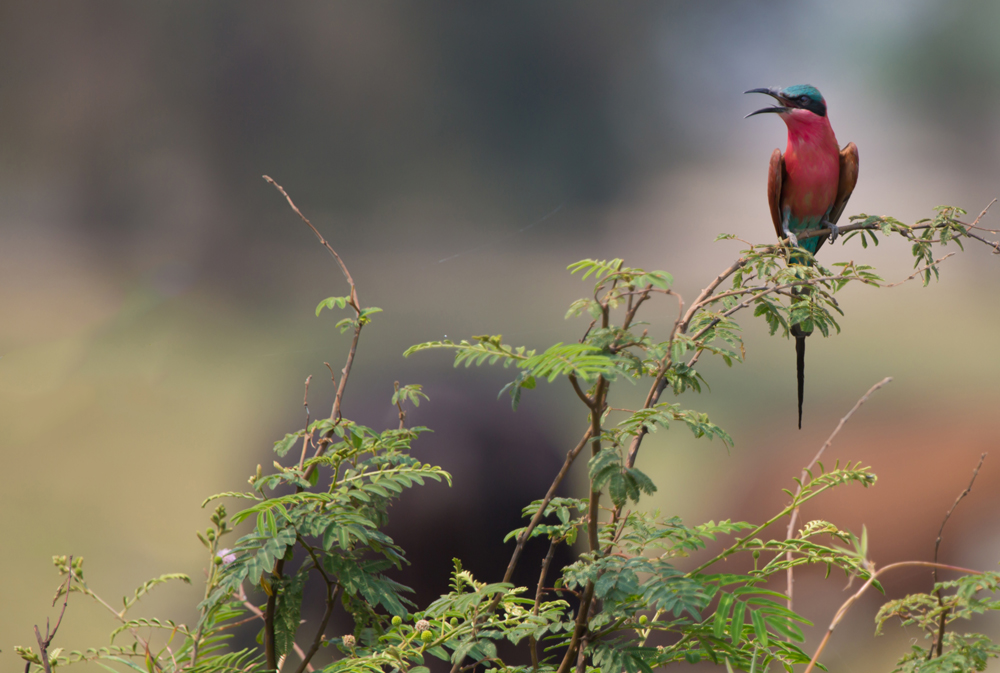Not something that you'd hand hold for more than a few minutes at best. As my own EF300mm f2.8 lens pales into insignificance size wise, I jokingly asked 'if he'd sold his house to buy the gear'. He said he had...
My point is that to get the best wildlife shots, you need patience, luck, good technique and the right gear - and that generally involves a super telephoto lens, or something close to it. By their very nature, most birds are small targets - no one wants to look at tiny dark specks sitting in distant branches.
Nature/wildlife photographers are rarely 100% happy with their gear, unless you are making a motza from your craft (or are just well off), you are unlikely to fritter away a fortune on such top-of-the-range equipment. Like most of us, you are probably in the position where your gear has to be rationalised with other expenses - such as the cost of living and familial responsibilities.
So our go-to lenses are often a bit of a quality compromise - cost versus practicality, profit versus usage. That's why most camera/lens companies produce not one, but often two lens tiers: the most affordable kit lenses with a complete range of focal lengths while producing, in the most part, acceptable results, and pro lenses that use the best glass and build quality thus producing excellent resolution, sharpness and performance.
Some manufacturers go further, producing what I call extreme lenses - these are usually in the superzoom (>400mm) or ultra-wide angle class (>10mm), but also encompass lenses that have the fastest maximum apertures on the planet (i.e. Voightlander Nocton 25mm f0.95 lens).
 |
| Carmine Bee-eater, closer to the subjects and cropped for effect (300mm lens + 2x Extender). Cropped in post for effect. |
If a big magnification lens is still out of the question (ie. too bulky/costly), the next best thing would be to crop for effect.
I do this a lot with files shot with my Canon 300mm lens - producing images with half, or even 1/4 the original 20mp resolution. The resulting crops look as though they have been shot using a 450mm, 600mm or even 800mm lens. But, the downside with this technique is that cropping loses pixels and when you remove pixels from a photo, quality inevitably follows.
 |
| Heavily cropped images can look good providing they are not viewed or printed above their recommended proportions. However, if the shot requires a lot of editing, as this bird silhouette probably does, it's going to be significantly harder to get a good result with an image file that's missing most of its pixels. In this example I liked the silhouettes - the two birds are easily identifiable because of their unique shapes: the large Hammerkop (its name means 'hammerhead'), and a Drongo on the right-hand side, with its distinctive forked tail. |
Another solution to the problem of expensive lenses might be to add an Extender to the lens. This gizmo fits between camera and lens and effectively magnifies the focal length: typically by 1.4x, or 2x. An Extender can save you a lot of money. For $700, my Canon EF 2x Extender effectively converts my EF300mm f2.8 lens into a 600mm f5.6 lens. A 'real' Canon 600mm f4 lens, on the other hand, costs nearly $20k. That's a lot of loose change.
Image quality suffers a bit with an Extender - it's hard to get pin sharp results and you lose some light, which is why it's an f5.6 lens, while the $20k Canon 600mm lens has the faster f4 aperture. But, as I don't have a spare 20k, any subsequent (slight) loss of quality I find quite acceptable. Note also that Extenders don't work on all lenses, so check before you buy one.
From my own experience, I note that most amateur photographers mostly post their work on social media so only really require a resolution of about 1024 x 1024 pixels - the resolution favoured by Instagram. This is tiny considering the new mirrorless cameras sport resolutions of 30, 45 and even 50 megapixels, enough pixels to print posters. I could crop as much as 80% off of my (20mp) images and still experience reasonable quality when the photos are posted to Instagram or Facebook.






No comments:
Post a Comment